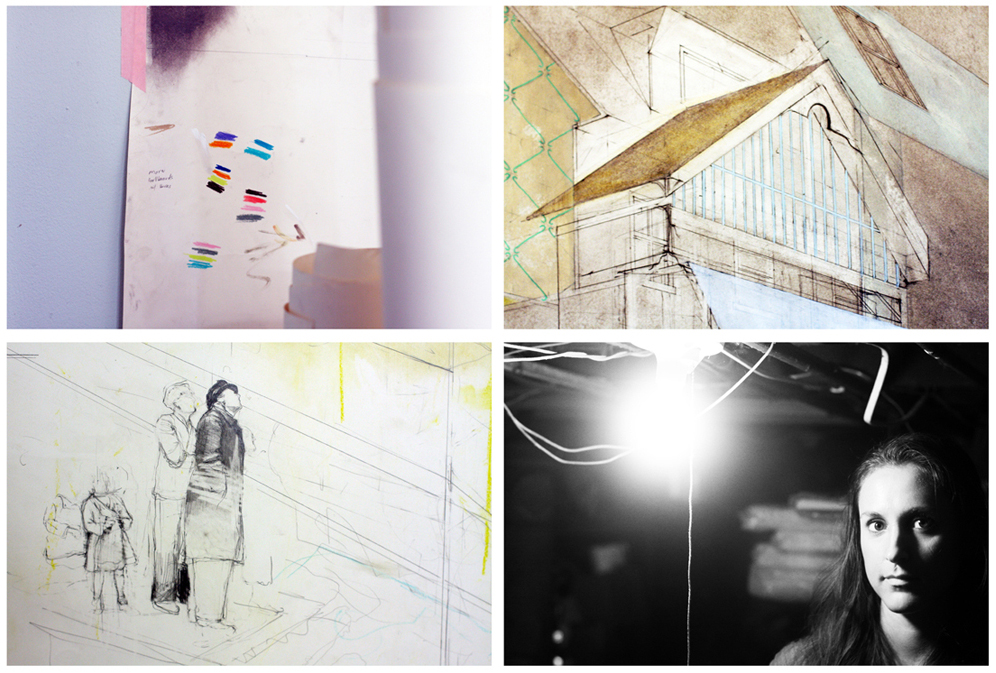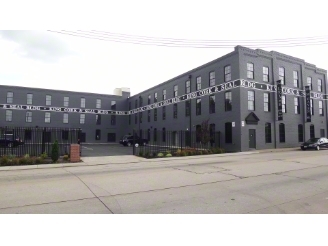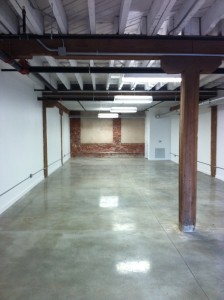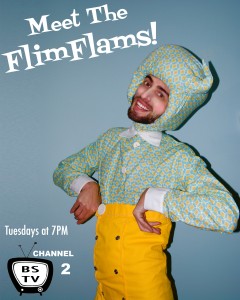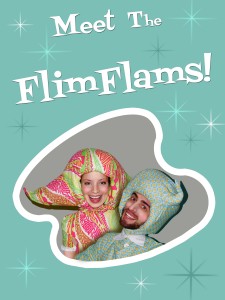Pinebox Art Center (PAC) was founded in 2012. The goal of this new art space is to “positively contribute to the growing and dynamic Baltimore art scene through diverse exhibitions and events, presenting a wide breadth of contemporary art forms.” In addition, they want to support local artists by providing affordable work space through a Studio Artist Program and offer a variety of education programming to the community. PAC is directed by Vincent Valerio and, of course, after hearing about this new project I wanted to find out more. Vincent kindly agreed to an interview.
Cara Ober: The first thing I am wondering is why the name Pine Box? How did the name come about? It reminds of me coffins.
Vincent Valerio: I have a process I usually follow when creating titles for my personal work, which I applied to naming this project. I take words or phrases related to the work of art or its’ concept and then look up synonyms for it. I repeat that process a few times with different combinations until I come up with something that sticks. I learned from the owner of the building that the warehouse was once used to make coffins. When I applied this process to the word coffin, pine box was the one that stuck for me.
CO: Where are you located? I have no idea where North Haven Street is. What is the neighborhood like? How did you found the space?
VV: We are located at 101 North Haven St., Suite 102 & 103. We are located within the top corner of the Highlandtown Arts & Entertainment District, which is very convenient to major routes such as 95, 895, and route 40. We are no more than a mile or so from places like Patterson Park, the Creative Alliance, and Canton Square. I also invest in real estate properties to flip, so I’m always researching buildings and locations. This project is something I’ve wanted to do for awhile, the timing seemed right, so when I found this space on one of my searches I couldn’t resist.
CO: The photos of the space look very clean and modern. How much renovation did you do on the building? What was it like initially and what changes did you make? Did you do it yourself or hire someone? How long has this process taken?
VV: The building was already renovated when I got involved. The owner did a great job. The only changes and additions I’m making is installing track lighting in the gallery space and adding of partition walls in the studio center next door as artists sign on board.
CO: Where are you originally from and how did you decide to study art at TU?
VV: I’m originally from Youngstown, OH. I was applying to grad schools all over the country, TU being one of them. In the end I was accepted to 3 schools, but I chose TU because I got a good gut feeling when I came to interview, and I felt the location was ideal. Baltimore is a great central east coast location with a growing art scene and prices much cheaper than DC or New York.
CO: You recently earned an MFA at Towson. What kind of work did you make in grad school? Who was inspiring to work with there? What have you been doing since you finished? Is this art space an extension of your studio practice? What kind of art do you hope to produce in conjunction with Pine Box Art Space?
VV: I earned my MFA in Sculpture in May, 2012 from Towson and I also teach there adjunct currently. I did a lot of experimenting of ideas in grad school, but everything came back to my core interests in the power of play and finding the ability to play as adults. The most inspiring people to work with at Towson were some of my fellow grad students such as Rob Guerverra and Rachel Timmins. My most recent work involves series of wearable sculptures/costumes that act as props and characters for multiple cross-disciplined projects from performance to photography. I don’t have intentions to link my personal practice with this business venture at Pinebox. I want them to operate separately. Pinebox should be a service and opportunity for the city, not a representation of my personal art work.
CO: What have be up to lately in your own art practice? What do you have coming up?
CO: You mentioned that you flip real estate as well. How long have you been doing this and in what capacity in Baltimore? What skills or insights have you gained from this profession that have affected or impacted your art carer?
VV: The first property I flipped I held onto for 3 years and rented. I sold that in September and I’m finalizing the deal on second property now. I just see it as an extension of my art career. I really enjoy the design aspects that go into renovating a property and the creative problem solving skills needed are beneficial in just about every realm of life.
VV: I am founding this project and directing it. I will do some curating, but I want to also bring others from the region in to share their voice and vision as well. I’m curating the inaugural exhibition “New Frontiers” but I’m planning to put a panel together to select some of the various solo exhibitions. The gallery and studio center are connected. We hope to participate in Baltimore open studio tours, as well as opening the door to the public during gallery receptions for those studio artists interested.
I want Pinebox to be a contemporary center for a variety of media. I also don’t want it to be just my personal taste, which is why I hope to involve many others in curating projects. Pinebox should be a democratic service to the community. I’m in the early stages of developing community outreach and educational programming as well for all ages and experience levels. Pinebox is going to be the new home of the non-profit B’moreAbilities.
I guess it does relate back to my personal work and interest in the ability to play. Play and creativity go hand in hand and research shows time and time again the importance of utilizing these abilities. I hope in time Pinebox will be able to provide these opportunities to many individuals across Baltimore.
CO: You’ve invested a lot of time, energy, and capital in Baltimore and its arts community. Do you see yourself as more of an Idealist or a Realist? What would you like to see happen in Baltimore in the next 10-20 years? Why do you choose to live here? How does being an artist in Baltimore create a unique set of opportunities or problems for you?
VV: I’d say I’m an idealist…a big idea, dreamer kind of guy. My father has always been the one I go to with my big ideas first to get his input because he keeps me grounded and reminds me of the realist persepctives…makes sure I can make things work and not get in over my head. It’s been a good partnership that way and all my family is always supportive of whatever new ideas I have. I’d love to see baltimore’s art scene continue to grow, why not become a little NYC!? I think we can…the location is great. I love the eclectic feel of baltimore, every neighborhood has it’s own unique vibe and I think that diversity is what makes Baltimore and exciting and atrractive place, matched with fairly inexpensive property, for artists to call home.
